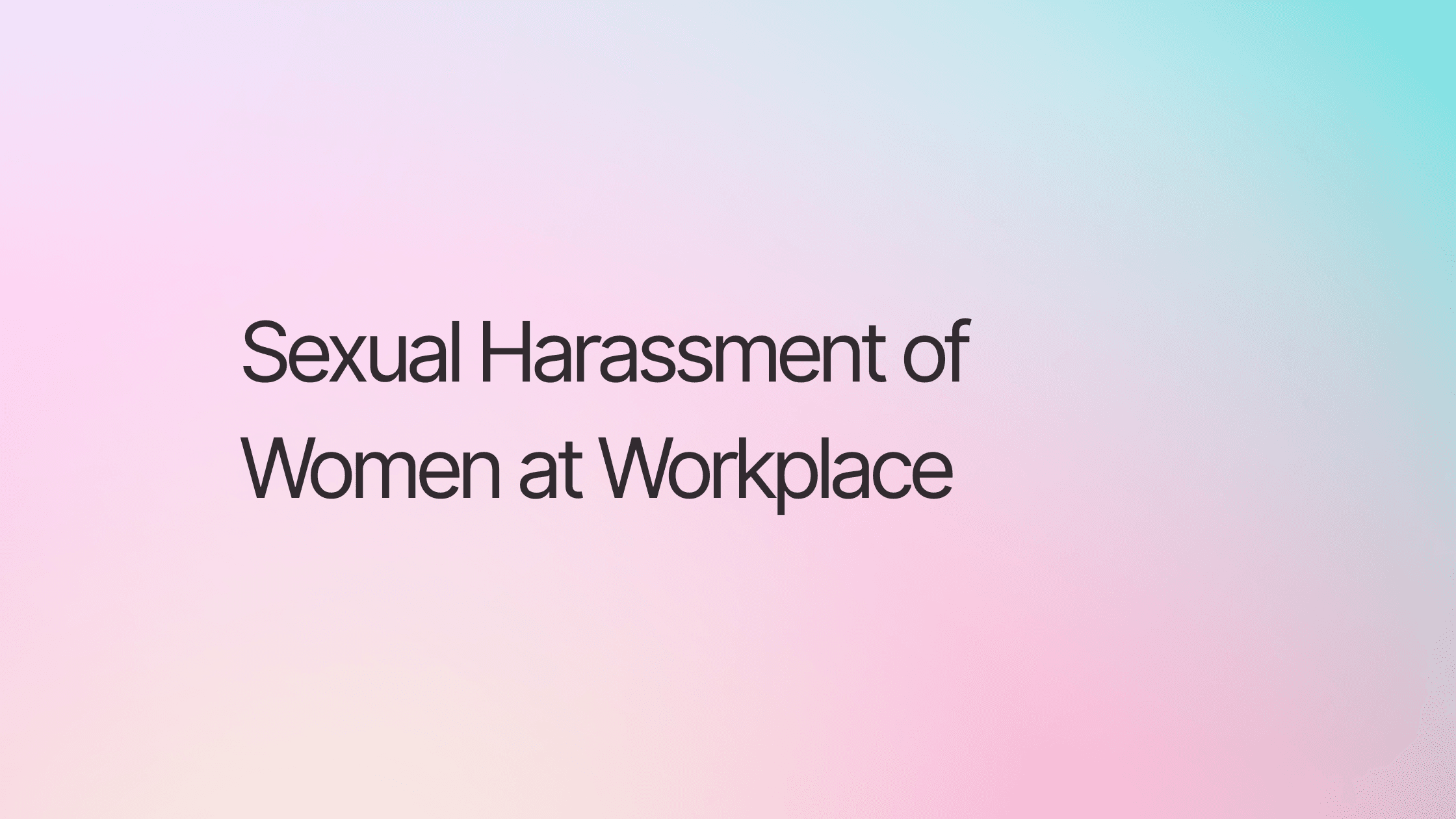Abstract
Today's culture has made sexual harassment both a hobby and a major issue. When women experience sexual harassment at work, it compromises their fundamental rights to equality under Articles 14 and 15 of India's Constitution, as well as their right to life and dignity under Article 21. The Vishaka v. State of Rajasthan (1997) case was a landmark judgment that led to the establishment of guidelines to prevent sexual harassment. The Sexual Harassment of Women at Workplace (Prevention, Prohibition, and Redressal) Act, 2013 (POSH Act, 2013) ensures a secure working environment for women in India.
Introduction
Sexual harassment at work is a critical issue affecting women across all industries. The POSH Act, 2013 was introduced to address workplace harassment, and organizations are required to comply with its provisions. The law aims to protect women from any form of sexual harassment and create an environment of respect and equality.
Objectives of this paper:
- Identify causes leading to sexual harassment at workplaces.
- Analyze trends in reported cases of sexual harassment.
- Provide recommendations for addressing incidents effectively.
- Discuss legal safeguards available to women at workplaces.
- Explore prevention strategies to reduce workplace harassment.
- Examine redressal mechanisms for victims.
Legal Framework for Sexual Harassment at Workplace
Constitutional Provisions:
- Article 14 & 15 – Right to Equality
- Article 21 – Right to Life and Dignity
- Article 19(1)(g) – Right to Profession and Business
International Commitments:
- CEDAW (Convention on the Elimination of All Forms of Discrimination Against Women) reinforces that gender-based harassment is a violation of human rights.
Definition under the Vishaka Guidelines:
Sexual harassment includes but is not limited to:
- Unwelcome physical contact
- Demand for sexual favors
- Showing pornography
- Verbal and non-verbal conduct of a sexual nature
How to Address Sexual Harassment at Workplace
Role of POSH Act, 2013:
- Internal Committees (ICs) must be set up in organizations.
- Regular POSH awareness training should be conducted.
- Employers must draft a POSH Policy to ensure compliance.
- Legal action can be taken under the Indian Penal Code (IPC) sections:
- Section 354A (Sexual harassment and punishment)
- Section 509 (Insulting a woman's modesty)
- Section 375 (Rape, in extreme cases)
Role of Organizations in Preventing Workplace Harassment
1. Awareness and Legal Compliance
- POSH training to educate employees on their rights and responsibilities.
- Clear policies for handling workplace harassment complaints.
2. Support Mechanisms
- Encouraging a culture where employees can report harassment without fear.
- Providing legal AI assistance for analyzing and addressing workplace discrimination cases.
3. Encouraging Reporting
- Confidential grievance redressal mechanisms.
- Legal AI solutions for tracking complaints and ensuring swift action.
4. Protecting the Company’s Reputation
- Ensuring compliance with POSH laws to avoid legal consequences.
- Using AI-powered compliance monitoring to track workplace ethics.
Conclusion
Sexual harassment is deeply rooted in gender power imbalances. While laws such as the POSH Act, 2013 provide protection, more efforts are needed to raise awareness and promote a culture of respect at the workplace. Legal AI solutions can assist in compliance, policy implementation, and fair investigation of harassment cases, ensuring justice and workplace equality.
